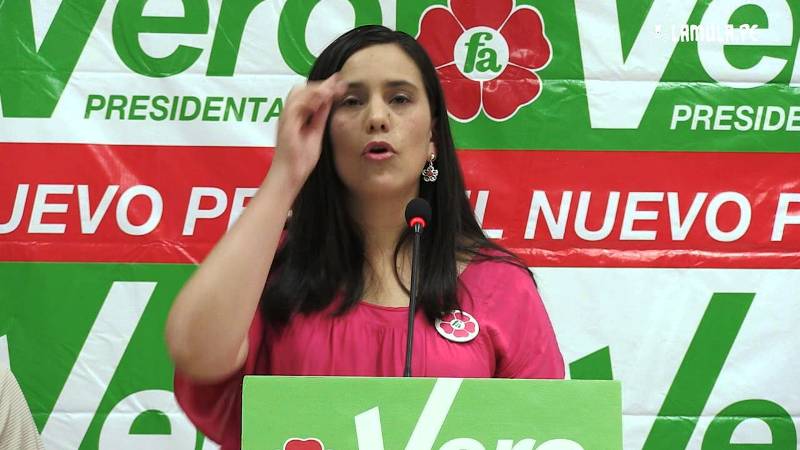by BARBARA ESTER & MARIA FLORENCIA PAGLIARONE
(translation by SEAN SEYMOUR-JONES
 Veronika Mendoza (pictured) ran as the presidential candidate
Veronika Mendoza (pictured) ran as the presidential candidate
of the left-wing Broad Front in the April 10 general elections
General elections were held in Peru [on April 10]. Along with the position of president and vice-president, 30 congresspeople were elected for the 2016 – 2021 period, and another five representatives to the Andean Parliament. According to the electoral roll, there are total of 22,017,030 registered voters residing in Peru, while another 884,924 people living abroad are registered and eligible to vote. Peruvian law establishes that if no candidate obtains more than 50% of the valid votes cast, a second round of elections will take place on June 5, 2016.
The participation rate was 85.01%. An interesting fact from the electoral roll is the proportion of young voters in this election: 6,779,371 young Peruvians, aged 18 to 29 years old, were registered to vote. Of these, 148,066 were registered overseas, with the United States being home to the largest number of Peruvian youth[1]. Moreover, for 717,959 young Peruvians aged 18 to 20 years old, this was the first time they were able to participate in elections.
With 99.9% of the votes counted, the initial results indicate that presidential candidate Keiko Fujimori has won 39.85% of the vote. In second place is Pedro Pablo Kuczynski (PPK), with 21%, and in third place, Verónika Mendoza with 18.82%. In fourth place is [Alfredo] Barnechea with 6.97% and in fifth place, Alan Garcia with 5.82%, his worst election result ever, confirming the need for the Peruvian Aprista Party (APRA) to find new leadership. If this tendency holds there is a possibility of a second round as no candidate obtained the 50% of the votes needed to become Peru’s next president.[2]
?With regards to the geographic distribution of the vote, initial results show Fujimori winning in 15 of the 24 regions, including the capital; Mendoza in seven southern regions; Kuzcynski in only one, Arequipa, the second biggest city of the country; and Gregorio Santos, the left-wing candidate that decided to run outside of the Frente Amplio and who campaigned from prison, where he is awaiting judgement for charges of corruption, easily won in Cajamarca.
LINKS for more
